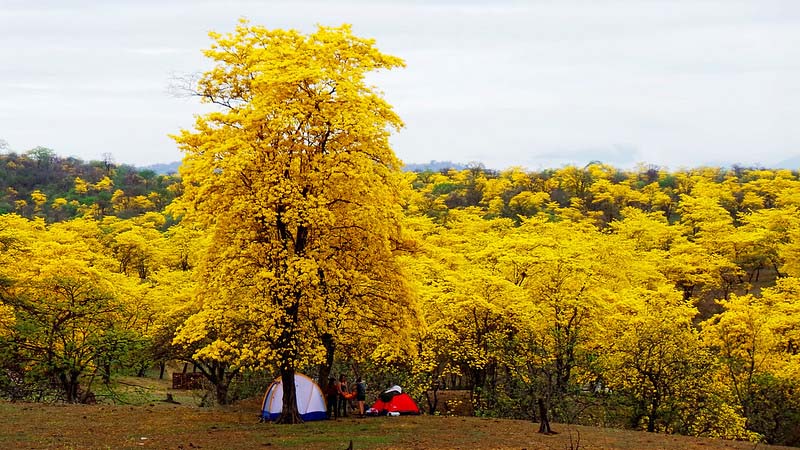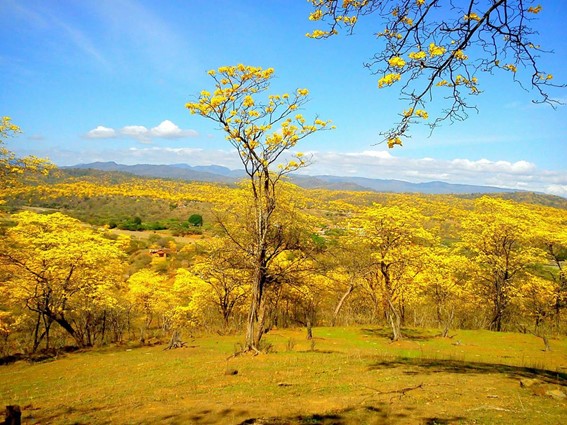
Guayacan, a tree that is native to tropical America, has a large distribution in the Caribbean islands, including Cuba, Puerto Rico, Cuba and the Dominican Republic, Colombia, Ecuador and Panama. It can be found at low elevations on stony plains but it can also be found in the dry forest, up to 500m.
The species can grow to a height of up to 20 meters. It has a dense, leafy canopy measuring approximately 10 meters. Guayacanes flower once or twice per year. The flowering season in Ecuador’s southern zone is usually in January or February. This is why it is a popular tourist attraction.
The natural spectacle of the guayacanes blooming in Loja, Ecuador is a real beauty. Guayacanes flower in 5 to 8 days during the rainy season. The flowers will fall at the end of the period and transform the ground into an yellow carpet.
Flowering is joyous and also an important ecological event. It represents the pollination period, which invites birds like hummingbirds and wasps to take in sweet nectar and turn it into organic matter, which can be used to enrich soil.
We mentioned that there are many places where Guayacanes can be found, but you might wonder where to go to see them bloom. Let us know if you have any questions.

The Guayacanes of Mangahurco, canton Zapotillo flowering usually occurs in January. More than 40,000 hectares of land are dyed yellow after the first rains. Mangahurco is also known for its Guayacan forests, making it an unforgettable destination. You can travel from Loja by taking the Catamayo route, which is also accessible from Quito via air. Continue on the Catamayo–San Pedro de la Bendita route towards Vela Cruz–Catacocha. You will be able to stop at Catacocha to visit the Chiriculapo viewpoint and walk the streets of this city, Cultural Heritage of Ecuador, if you depart early. Continue south towards El Empalme. From there, turn right to Celica. Continue on the Posul-Pindal route and continue to Mangahurco by taking the Paletillas route.
There are 13,170.025 ha in the Arenillas Ecological Reserve of tropical dry forests. It is the Ecuadorian coast’s most important xerophytic reserve and has the largest area of southwestern Ecuador. The reserve is home to many endemic species. It also hosts the spectacular spectacle of Guayacanes flowering, where more than 3000 tourists visit to see the gorgeous yellow mantle of Guayacanes flowers.
You should also consider that Mangahurco’s climate is very hot with frequent rains in the afternoon and evening. You will need to bring your own water bottle.
You can add to your experience by horseback riding, hiking through forests, or camping under trees during your visit. Loja also offers a variety of delicious dishes like Seco de chivo or Seco de gallina criolla, which are both great for tasting.
Here are some final suggestions

Because the weather can affect the flowering times of the guayacanes it is not advisable to plan your trip around them. You should plan your Loja visit in January. Ask your guide to pay attention to signs of flowering to ensure that you can live the experience from beginning to end.
This natural phenomenon is undoubtedly a surprise to both locals and tourists for its beautiful gift. It remains a reminder to protect and care for these places that have scenic and ecological significance.
Leave a Comment